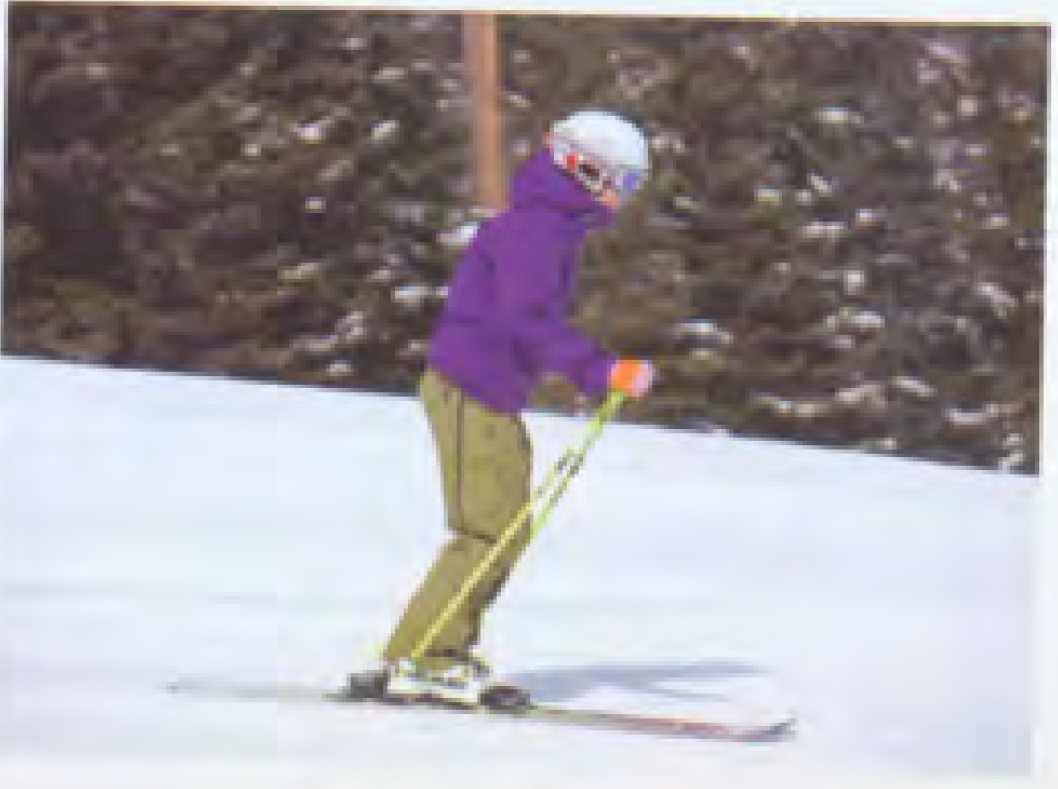A body in balance is in a state of equilibrium. More specifically, equilibrium denotes opposing forces are in a state of balance. In skiing, a person must maintain equilibrium between the forces that act on him or her (gravity or inertia) and the forces that act on the skis (centripetal and friction). This relates to the forces action on the CM (the central balance point of body mass) and the BOS (the location of weight on the snow). Skiers control the external forces that affect balance by rotating or edging the skis and resisting, increasing, or absorbing pressure. The same movements a skier creates to turn, tip, and manage pressure on the skis also affect the momentary relationship between the CM and BOS. It is these relationships that define equilibrium or balance. A common debate in skiing is whether being in a state of balance creates the ability to move effectively, or if moving effectively results in a state of balance. The simple and accurate answer is “yes,” defining the dual role of balance in skiing.
Balance as as Source of Effective Movement
Skiers who are not in a state of equilibrium when forces act on their CM will not be able to effectively use their muscles to control the interaction of the skis with the snow. This fact is true even before any movement occurs; it is turn in both a simple straight run and in a dynamic turn. As such, it places great demand on the fundamentals of a static athletic stance.
Athletic Stance
An athletic stance - which is virtually the same for any motor sport - is defined by the ability of the athlete to move in any direction at any time. In an athletic stance:
- The feet are approximately hip-width apart to provide a BOS
- All major joints are flexed
- Weight and balance is toward the balls of the feet
- The arms are raised slightly above the waist, with the elbows just in front of the body and the hands positioned slightly wider than the elbows
- The pelvis is neutral (with the lower back neither arched nor the tailbone tucked)
- The head is up with the vision forward
 The goal of an athletic stance is to align the body to have maximum access to the three basic skills, while maintaining a balanced relationship between the CM and BOS. The basic stance for a skier includes flexion of the ankles, knees, hips, and spine. From a side view, the slant of the lower leg is parallel or nearly parallel to the slant of the upper body. The overall height of the stance is determined by boot setup, intent, and the ability of the skier.
The importance of this stance cannot be overstated; any style or habit that negatively impacts these elements of an athletic stance will have a negative impacts on the skier’s ability to move effectively.
The goal of an athletic stance is to align the body to have maximum access to the three basic skills, while maintaining a balanced relationship between the CM and BOS. The basic stance for a skier includes flexion of the ankles, knees, hips, and spine. From a side view, the slant of the lower leg is parallel or nearly parallel to the slant of the upper body. The overall height of the stance is determined by boot setup, intent, and the ability of the skier.
The importance of this stance cannot be overstated; any style or habit that negatively impacts these elements of an athletic stance will have a negative impacts on the skier’s ability to move effectively.
Balance as an outcome
Balance is also an outcome of effective movement. A skier managing ski-to-snow interaction effectively will maintain equilibrium between the CM and the forces created by the skis. From an athletic stance, a skier must make constant adjustments to affect the skis and maintain balance. In this dynamic state, even as the skier bends, extends rotates, and tips, definitive references for effective balance (and body relationships) are identifiable.
Fore/Aft References
- The skier’s posture maintains a degree of forward lean relative to speed, terrain, and snow conditions.
- The degree of ankle flex determines the lower-leg angle, which is match by the angle of the spine.
Lateral References
The skier’s hips, shoulders, and hands remain relatively level (perpendicular to gravity) as the CM moves to the inside of the turn.
Rotational References
An imaginary line that crosses the front of the binding is parallel to lines drawn across the knees, front of the hips, shoulders, and hands.
These dynamic-balance references are not the static stance positions described for an athletic stance. Instead, they represent body relationships that result from accurate movements while skiing. A wide variety of movements can be used to turn and tip the skis, and to manage pressure on the skis, but only effective movements will maintain balance and result in the body relationships described previously.